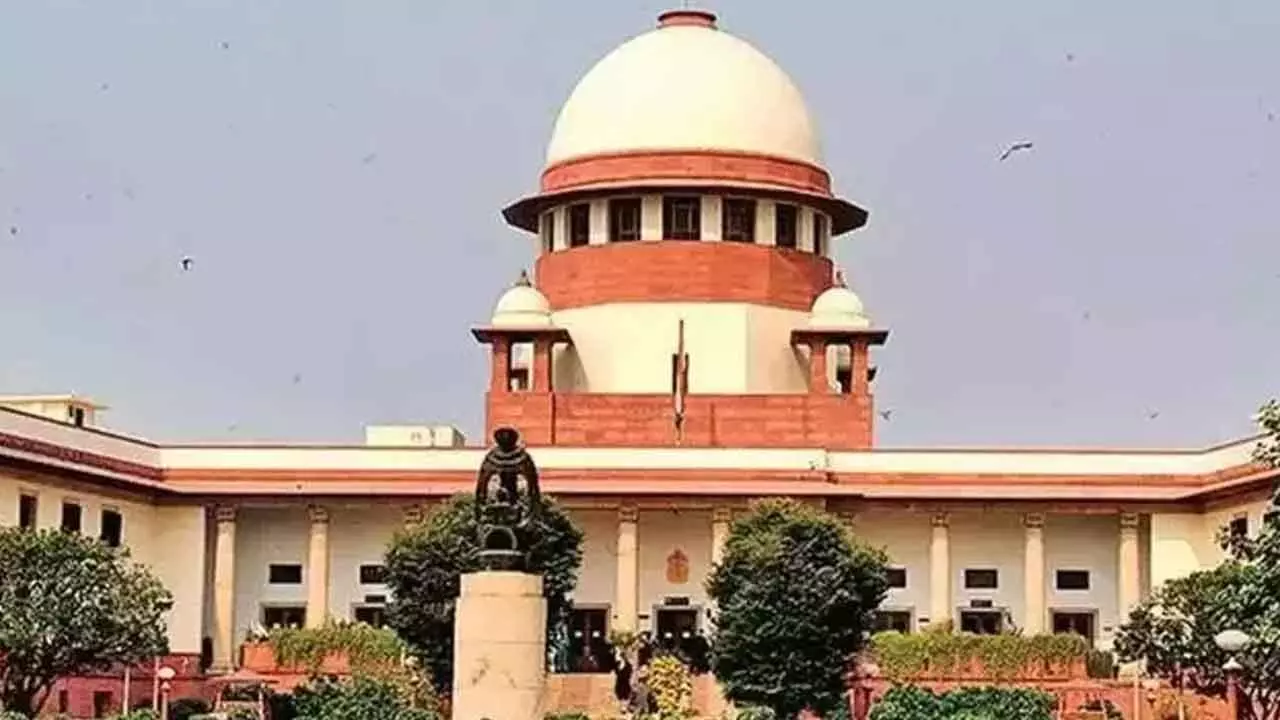Not every private resource can be considered a ‘material resource of the community’: SC

New Delhi: The Supreme Court on Tuesday ruled that held that not every resource owned by an individual can be considered a "material resource of the community", merely because it meets the qualifier of "material needs".
A seven-judge Constitution Bench, headed by CJI D.Y. Chandrachud, said that inquiry about whether the resource in question falls within the ambit of Article 39 (b) of the Constitution must be context-specific and subject to a non-exhaustive list of factors such as the nature of the resource and its characteristics, the impact of the resource on the well-being of the community, the scarcity of the resource, and the consequences of such a resource being concentrated in the hands of private players.
"The Public Trust Doctrine evolved by this court may also help identify resources which fall within the ambit of the phrase 'material resource of the community'," it added.
The Constitution Bench, also comprising Justices Hrishikesh Roy, B.V. Nagarathna, Sudhanshu Dhulia, J.B. Pardiwala, Manoj Misra, Rajesh Bindal, S.C. Sharma and A.G. Masih, was dealing with questions as to whether the term "material resources of the community" in Article 39 (b) include privately owned property and whether laws intended to achieve this provision's objective of redistributing material resources for the "common good" be exempted from legal challenges based on violations of fundamental rights.
The majority held that the term "distribution" has a wide connotation and the various forms of distribution which can be adopted by the state authorities cannot be exhaustively detailed. It added that distribution may include the vesting of the concerned resources in the state or nationalisation and in the specific case, the court must determine whether the distribution "subserves the common good".
While Justice Nagarathna authored a separate but partially concurring opinion, Justice Dhulia penned down a dissenting judgment.
In her opinion, Justice Nagarathna said that Articles 37, 38, and 39 of the Constitution need to be interpreted by bearing in mind the changing economic policies and not in a rigid watertight compartment.
"The flexibility of interpretation is having regard to the dynamic changes in the Indian socio-economic policies meant for the welfare and progress of the people of India," she held.
Justice Dhulia, in his dissenting opinion, said that is for the legislature to decide how the ownership and control of material resources is to be distributed in order to subserve the common good.
"Once the expansive meaning of 'material resources of the community' is determined, there is no necessity of drawing further guidelines for the legislatures to determine as to what will constitute material resources."
"How to control and distribute a material resource is also the task of the Legislature, but while doing so what has to be seen is that the control and ownership of the material resource be so distributed that it subserves the common good of the community. If it does not, then such legislation can be struck down as the judiciary is not deprived of its powers of judicial review. The legislation in question has to establish a nexus with the principles specified in Article 39 (b) and (c) to be a valid legislation," he opined.
Article 39(b) of the Constitution, falling under the Directive Principles of State Policy (DPSP), mandates that the administration will direct its policy towards ensuring that the material resources of the community are distributed equitably.
"The state shall, in particular, direct its policy towards securing that the ownership and control of the material resources of the community are so distributed as best to subserve the common good," reads Article 39(b).
The key question arose before the Supreme Court as to whether private property can be considered part of the "material resources of the community" in the context of this provision.
The principle behind the insertion of Article 39(b) was to ensure that the resources necessary for economic growth and social justice serve the collective welfare or “common good”, rather than being concentrated in the hands of a few.
In its detailed judgment, the Supreme Court also held that Article 31C of the Constitution, to the extent it was upheld in the landmark Keshavanada Bharati case, remains in force and, after referring to several judgments delivered in the past, said that the first part of the unamended Article 31C was constitutional and continued to remain in force.


